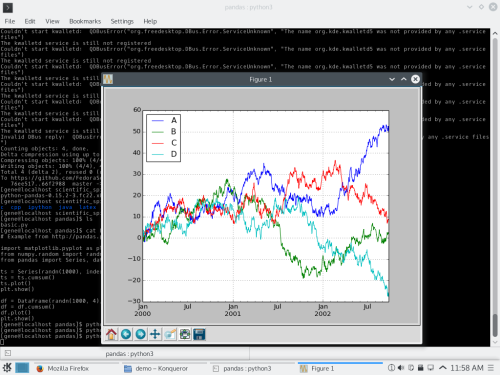I am excited to share that the fifth and sixth chapters are available as part of the early access of my book Doing Math with Python.

Chapter 5: Sets and Probability
This chapter starts off with how to create a set and demonstrating the common set operations. Utility of the different set operations are demonstrated via simple applications. For example, Cartesian product is used to write a program to simulate an experiment to calculate the time period of a simple pendulum of different lengths and at places with varying gravity. Union and intersection operations are applied to finding the probability of events.
The chapter then moves onto discussing how to generate uniform and non uniform random numbers, and using them to simulate scenarios such as a die roll and a fictional ATM which dispenses dollar bills of different denominations with varying probability.
One of the challenges at the end discusses drawing venn diagrams.
Chapter 6: Drawing shapes and Fractals
This chapter is logically divided into two parts. The first part introduces the reader to matplotlib patches which allows drawing geometric shapes (circles and polygons), followed by matplotlib’s animation API which allows drawing animated figures. The trajectory of a projectile motion discussed elsewhere in various contexts is animated combining both these things.
The second part of the book introduces the concept of geometric transformation. Combining that with the knowledge of generating random numbers learned earlier in Chapter 5, the reader will learn how to draw fractals such as the Barnsley Fern.
The challenges at the end gives the opportunity for the reader to explore the Sierpinski triangle and Henon’s function.
Trying out the programs
Using the Anaconda distribution (Python 3) should be the easiest way to try out all the programs in the book. You will need matplotlib, sympy 0.7.6 and matplotlib_venn to try out the programs. An installation guide will be available online soon.
Stay updated
I am working on the last chapter for the book. You can stay updated on the book via various channels:
Blog posts: http://echorand.me/category/doingmathwithpython/
Facebook page: https://www.facebook.com/doingmathwithpython
G+ Community: https://plus.google.com/u/0/communities/113121562865298236232
Twitter: https://twitter.com/mathwithpython
If you are interested in taking a look at a sample copy, I can try to get a sample for you to look at the current pre-released version of the book. Please feel free to get in touch.





